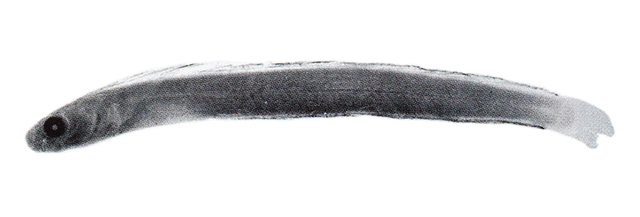| Blenniidae (Combtooth blennies), subfamily: Blenniinae |
| 4.5 cm TL (male/unsexed) |
|
demersal; marine; depth range 3 - 9 m |
| Western Central Pacific. |
|
Dorsal spines (total): 10-10; Dorsal soft rays (total): 43-44; Anal spines: 2-2; Anal soft rays: 40-40. Color in life unknown. Coloration in preserved specimen a fine peppering of chromatophores on body and a somewhat dark wedge-shaped area of pigments at caudal-fin base. Segmented caudal rays 11; dentary incisors with arrowhead-shaped tips; interorbital pores 4; body very elongate, depth about 12.7 in SL (Ref. 90102). |
| Based on characters common to the family, this species is oviparous. Eggs are demersal and adhesive (Ref. 205), and are attached to the substrate via a filamentous, adhesive pad or pedestal (Ref. 94114). Larvae are planktonic, often found in shallow, coastal waters (Ref. 94114). Only record is of 2 specimens collected from 1919 by dynamite from Jolo Island, Philippines (Ref. 90102). |
|
Data deficient (DD); Date assessed: 25 March 2009 Ref. (130435)
|
| harmless |
Source and more info: www.fishbase.org. For personal, classroom, and other internal use only. Not for publication.
